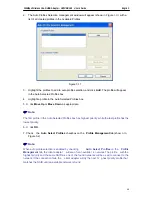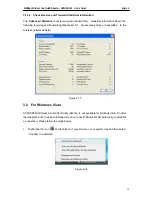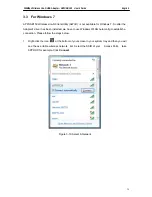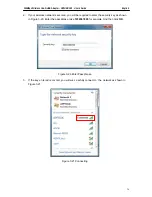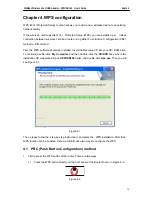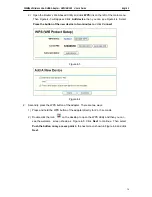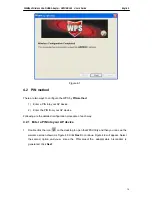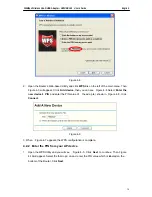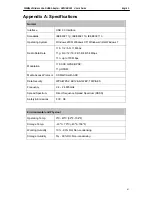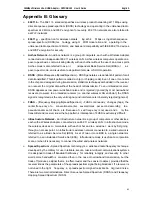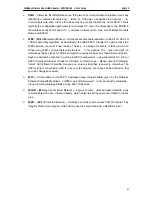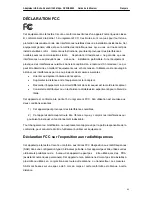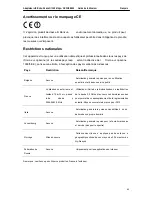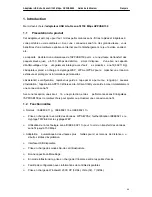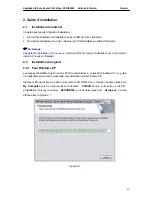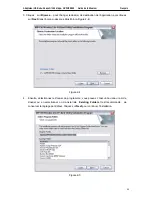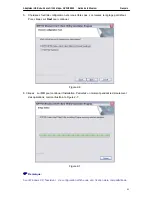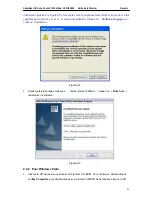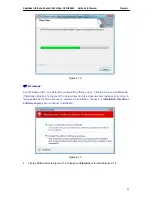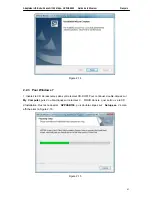
150Mbps Wireless Lite-N USB Adapter – APPUSB150 User’s Guide English
Appendix B: Glossary
802.11b -
The 802.11b standard specifies a wir eless product networking at 11 Mbps using
direct-sequence spread-spectrum (DSSS) technology and oper ating in the unlicensed radio
spectrum at 2.4GHz, and WEP encryption for security. 802.11b networks are also referred to
as Wi-Fi networks.
802.11g
-
specifica tion for wireless network
ing at 54
Mbps us ing direct-sequence
spread-spectrum (DSSS) tec hnology, using O FDM modul ation and operating in the
unlicensed radio spectrum at 2.4GHz, and backward compatibility with IEEE 802.11b devices,
and WEP encryption for security.
Ad-hoc Network -
An ad-hoc network is a group of computers, each with a Wireless Adapter,
connected as an independent 802.11 wireless LAN. Ad-hoc wireless computers operate on a
peer-to-peer basis, communicating directly with each other without the use of an access point.
Ad-hoc mode is also referred to as an I
ndependent Basic Service Set (IBSS) or
as
peer-to-peer mode, and is useful at a departmental scale or SOHO operation.
DSSS -
(
D
irect-
S
equence
S
pread
S
pectrum)
-
DSSS generates a redundant bit pattern for all
data transmitted. This bit pattern is called a chip (or chipping code). Even if one or more bits
in the chip are damaged during transmission, statistical techniques embedded in the receiver
can recover the original data without the need of retransmission. To an unintended receiver,
DSSS appears as low power wi deband noise and i s rejected (ignored) by most narrowband
receivers. However, to an intended receiver (i.e. another wireless LAN endpoint), the DSSS
signal is recognized as the only valid signal, and interference is inherently rejected (ignored).
FHSS -
(
F
requency
H
opping
S
pread
S
pectrum)
-
FHSS continuously changes (hops) the
carrier frequ ency of a conventional carrier several times per second according to a
pseudo-random set of chann els. Because a fi xed frequ ency is not used, and o
nly the
transmitter and receiver know the hop patterns, interception of FHSS is extremely difficult.
Infrastructure Network -
An infrastructure network is a group of computers or other devices,
each with a Wireless Adapter, connected as an 802.11 wireless LAN. In infrastructure mode,
the wireless devices co mmunicate with each ot her and to a wired net work by first going
through an access point. An infrastructure wireless network connected to a wired network is
referred to a s a Basic Se rvice Set (BSS). A set of two or mor e BSS in a single network is
referred to as an Extended Service Set (ESS). Infrastructure mode is useful at a corporation
scale, or when it is necessary to connect the wired and wireless networks.
Spread Spectrum -
Spread Spectrum technology is a wideband radio frequency technique
developed by the military for use in reliable, secure, mission-critical communications systems.
It is designed to trade off bandwidth efficiency for reliability, integrity, and security. In other
words, more bandwidth is consumed than in the case of narrowba nd transmission, but the
trade off produces a signal that is, in effect, louder and thus easier to detect, provided that the
receiver knows the parameters of the spread-spectrum signal being broadcast. If a receiver is
not tuned to the right frequency, a spread-spectrum signal looks like ba ckground no ise.
There are two main alternatives, Direct Sequence Spread Spectrum (DSSS) and Frequency
Hopping Spread Spectrum (FHSS).
82

